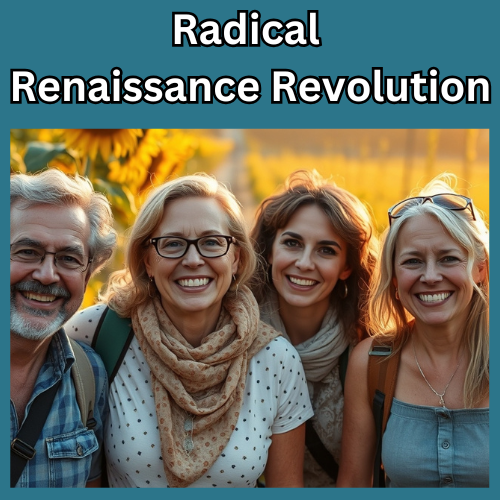Break free from external expectations and embrace your own worth this Valentine’s Day
I. Introduction
Let’s start with a confession: I once bought myself a bouquet of roses on Valentine’s Day and told the cashier they were from a “secret admirer.” She winked and said, “Lucky you!” And you know what? She was right. Because here’s the truth no one wants to say out loud: Valentine’s Day isn’t just for couples. It’s a celebration of every kind of love that makes life worth living—including the messy, glorious, underrated art of loving yourself!
Rewriting Valentine’s Day traditions to celebrate your relationship with yourself
For decades, Valentine’s Day has been hijacked by a very specific narrative: candlelit dinners, overpriced chocolates, and grand romantic gestures that look great on Instagram but feel like emotional tax audits for the rest of us. Society has framed this day as a membership card you only get if you’re coupled up, leaving everyone else to either fake-smile through it or rage-binge on discounted chocolates on February 15th.
But what if we’ve been sold a lie?
In this post, we’re tearing up the rulebook. We’ll dissect how Valentine’s Day became a cultural guilt trip (spoiler: blame capitalism and medieval poets) and why its exclusivity is literally bad for your health.
II. The Problem with Traditional Valentine’s Day Celebrations
Let’s time-travel for a sec. The original St. Valentine was allegedly a rebel priest who married soldiers to their sweethearts in secret because the Roman Empire thought single men fought better. Romantic? Sure. Valentine’s day, as we know it today, was basically invented by 14th-century poets and 19th-century greeting card companies. Chaucer wrote flowery verses about birds choosing mates; Cadbury slapped hearts on chocolate boxes.
And here we are, pretending it’s “romantic” to drop $200 on roses that’ll die in a week while single folks scroll through TikTok feeling like they’ve failed at adulthood. The dissonance is almost comical: a celebration rooted in rebellion and love letters now reduced to a performative circus where your worth is measured by whether someone remembered to tag you in a #MineForever post.
Valentine’s Day’s exclusivity is literally bad for your health
To be brutally honest: Traditional Valentine’s Day isn’t just annoying—it can be harmful. Studies show that feeling excluded socially triggers the same neural pathways as physical pain. So when every ad, store display, and coworker’s desk screams “love = romance,” it’s not just irritating. It’s a psychological gut-punch to anyone grieving, single, divorced, or just plain over it.
And the ripple effects are everywhere. In workplaces, team morale tanks as singles dodge awkward “What are your plans?!” questions while coupled colleagues sneak out early for reservations. Creativity suffers when people are too busy feeling “less than” to contribute ideas. Even businesses lose: 53% of single consumers actively avoid Valentine’s promotions, according to a 2023 consumer report. We’re all trapped in a system that equates love with romantic validation—and it’s making us lonelier, pettier, and poorer (seriously, have you seen the markup on those chocolates?).
Transform Valentine’s Day into an opportunity for self-discovery
Here’s the twist you didn’t see coming: Our obsession with romantic-only love isn’t just a personal problem. It’s a professional liability. Think about it. Innovation thrives on diverse perspectives, right? But when workplaces (consciously or not) uphold traditions that exclude swaths of people, they’re basically putting creativity in handcuffs.
Imagine a team brainstorming session the week after Valentine’s Day. Karen from accounting, who’s freshly divorced, is too busy side-eyeing the “Happy Love Month!” banner to pitch her killer idea. Jake, who’s been single for three years, downplays his contributions because subconsciously, he’s internalized that “success” includes a plus-one. Meanwhile, management keeps hosting “date night” giveaways that 40% of the staff can’t (or don’t want to) use. It’s not just about hurt feelings—it’s about bottom lines. Companies clinging to exclusionary traditions are leaving money, talent, and innovation on the table.
It’s time to transform Valentine’s Day from a narrow, exclusionary ritual into a catalyst for radical change.
III. The Radical Act of Celebrating Yourself on Valentine’s Day
Why Self-Love Isn’t Just a Hashtag:
Let’s get one thing straight: Self-love isn’t lighting a candle and whispering affirmations to your bathroom mirror (though if that’s your jam, rock on). It’s about treating yourself with the same fierce loyalty you’d give a best friend. Think about it—when your pal gets dumped, you don’t say, “Wow, you’re unlovable. Want a sad salad?” You rally. You bring wine, trash-talk their ex, and remind them they’re a glitter-covered goddess. So why do we abandon ourselves the second society whispers, “But where’s your partner?”
Valentine’s Day is the perfect time to rebel against that nonsense. This isn’t about “coping” with being single. It’s about throwing a parade for the most important relationship you’ll ever have—the one with yourself.
The Science of Solo Celebration:
Before you dismiss this as woo-woo fluff, let’s talk cold, hard facts. Research shows that people who practice self-compassion have lower anxiety, higher resilience, and better problem-solving skills. Translation: Treating yourself like a VIP isn’t just good for the soul—it makes you smarter, calmer, and more creative. Meanwhile, tying your worth to romantic validation is like building a skyscraper on Jell-O. Fun for a minute, until the whole thing collapses.
Anecdote Time:
Last year, I declared February 14th “National Me Day.” I took myself to a fancy pasta bar, scribbled a list of things I loved about myself (including “weirdly good at parallel parking” and “excellent emergency chocolate stash curator”), and binge-watched Downton Abbey (again.). By midnight, I felt like I’d won the Olympics of adulthood. Was it cheesy? Absolutely. Did it work? Surprisingly well.
IV. How to Host a Party for One (No RSVP Required)
Step 1: Ditch the “Wait for Permission” Mindset
Society loves to tell single people they’re “waiting for love.” Nah. You’re not a benchwarmer in the game of life. This Valentine’s Day, give yourself permission to celebrate—no justification needed. Want to buy yourself jewellery? Do it. Crave a solo dance party? Blast Lizzo. The rule is simple: If it sparks joy, it’s valid. Just do it.
Step 2: Start Your Own Valentine’s Day Traditions
Romantic relationships have anniversaries. Why shouldn’t your relationship with you? Start a ritual that’s 100% yours:
- Write yourself a love letter (Pro tip: Roast your flaws affectionately. “Dear Me, thanks for keeping that cactus alive despite your track record with plants. Growth!”).
- Take a “soul date”—hike, museum, patisserie crawl—where you do something that makes you feel vibrantly you.
- Host a “Galentine’s/Palentine’s” bash for fellow single friends. Theme: “Celebrating the Love We Have.”
Step 3: Weaponise Gratitude (But Make It Fun)
Gratitude journals are great, but let’s innovate. Try:
- Texting friends one reason you adore them. Watch the group chat explode with joy.
- Making a “Love CV” listing your non-romantic wins: That time you fixed the Wi-Fi, your killer banana bread recipe, how you make strangers laugh in elevators.
- Creating a “No Apologies” playlist of songs that make you feel invincible (suggestions: “Flowers” by Miley Cyrus, “I Will Survive,” and the Rocky theme, obviously).
Step 4: Redefine “Romance”
Romance isn’t reserved for couples. It’s a vibe. Light candles for your bath just because. Buy the stupidly expensive cheese. Wear that outfit that makes you feel like the main character. Love isn’t something you earn—it’s something you radiate.
V. Why This Matters
The Ripple Effect of Radical Self-Love:
When you unapologetically celebrate yourself, you do something revolutionary: You reject the idea that love is a scarce resource only some deserve. And guess what? That energy is contagious. Your divorced coworker might stop hiding her ringless finger. Your nephew might feel less pressure to “couple up” by 25. You become proof that happiness isn’t a relationship status—it’s a daily practice.
Professional Superpowers Unlocked:
Here’s the sneaky perk no one talks about: People who prioritise self-love show up differently at work. They negotiate raises more confidently, pitch wild ideas without self-sabotage, and lead with empathy because they’re not drained by insecurity. Imagine a workplace where Valentine’s Day isn’t a minefield of exclusion, but a launchpad for team-building exercises like “Shoutout Circles” or “Innovation Day” where everyone’s strengths are celebrated. That’s the culture shift we’re brewing.
Final Anecdote (With a Punchline):
Two years ago, I gifted myself a weekend writing retreat for Valentine’s Day (see below.) I ate cold pizza in bed, wrote terrible poetry, and invented a dance called “The Solo Shimmy.” When I returned to work, my boss said, “You seem… brighter.” I was. Because I’d given myself the gift so many wait for others to give them: undivided attention.
VI. Conclusion: Your Love Story Is Already Writing Itself
The Mic Drop Moment:
Valentine’s Day doesn’t have to be a reminder of what you lack. It can be a standing ovation for what you’ve built: a life, a personality, a collection of tiny triumphs and spectacular messes that are yours. So this year, skip the forced romance and throw confetti in the face of expectations. Buy the flowers. Be your own secret admirer. And if anyone side-eyes your solo celebration, hit ’em with this truth bomb:
“The most dangerous thing a person can do is decide they’re enough—exactly as they are.”
Call to Action (With a Wink):
This February 14th, I dare you to fall recklessly, shamelessly in love… with yourself. And if you need a little help? Dig out that emergency chocolate stash. You’ve earned it.
Why not give yourself a Valentine’s gift of transformation by joining one of my Camino de Santiago walking and writing retreats this year? Imagine setting off on a journey where each step along this ancient trail is an invitation to rediscover your inner strength, while the serene landscapes inspire your writing and re-ignites your creativity. This retreat is more than a just getaway to the southwest of France—it’s a chance to reconnect with your deepest passions, explore the timeless magic of the Camino, and invest in your own well-being. Embrace the adventure, allow creativity to flow, and celebrate self-love in a way that nurtures both body and spirit.
“Self-care is never a selfish act—it is simply good stewardship of the only gift I have, the gift I was put on earth to offer to others.”—Parker Palmer




